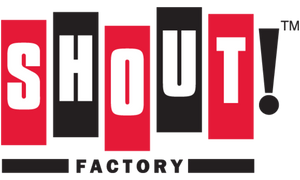This article is from our friends at Trunkworthy
Unlike any show before and influencing so many after—including Freaks and Geeks—My So-Called Life takes The American Teenager, like, seriously.
It was August 1994, and My So-Called Life had just emerged to Give Meaning To It All. Kurt Cobain was four months gone, and with him vanished a countercultural beacon. So for an angst-ridden generation hunched over their Doc Martens in tears, Jordan and Angela represented the unrepresentable: we understand you.
When Jordan Catalano first appeared on my television set, I sat paralyzed by a whopping magnetic force field of amplified teenage estrogen. One look at those intense blue eyes, one glimpse of that flawless brown hair, and—oh, god—the slacker-sexy way he casually leaned against every stationary surface, and I was ready to hand over my test answers, my locker combination, and even my virginity.
It was August 1994, and My So-Called Life had just emerged to Give Meaning To It All. Kurt Cobain was four months gone, and with him vanished a countercultural beacon. So for an angst-ridden generation hunched over their Doc Martens in tears, Jordan and the show’s enigmatic lead, Angela Chase (played by then-newcomers Jared Leto and Claire Danes), represented the unrepresentable: we understand you.
But while My So-Called Life was so clearly of the ’90s, it continues to live on past the ’90s. Twenty years on, it’s a timeless meditation on adolescence, that murky period between the innocent tug of childhood and the untested waters of adulthood, where questions come faster than answers. The magical thing here is that while Angela, Jordan, and their compadres show up rolling their eyes beyond their sockets, the writers avoid doing the same. Unlike any show before and influencing so many after—including Freaks and Geeks—My So-Called Life takes The American Teenager, like, seriously.
Forget the typical 90210 caricatures. These characters are deliciously complicated (in keeping with a show that helped launch the first great era of television, along with programs like Homicide and Twin Peaks). Its teenagers aren’t lumped into lazy high school stereotypes—Nerd! Stoner! Jock! Slut!—they’re complex composites of you and me and everyone we know. Like us, their problems aren’t neatly packaged into 60-minute solvables; their beauties and flaws intertwine and unfold across the entire series. And in the case of this show, for only one season. If cable networks had been supporting programs like this one, as they do now, it would’ve gotten even more love and more seasons. Simple critical acclaim is never enough for a network show.
Still, My So-Called Life socks me in the gut two decades later. While I continue to think Jordan is a hunk and well up when Angela and childhood bestie Sharon repair their mangled friendship, I also now identify with Angela’s parents. It’s some sort of magic TV voodoo when a show gets so very right their portraits of both adolescents and adults that it transcends age. Like Angela and co., Mom and Pop Chase enjoy sloppy make out sessions, struggle with self-esteem, come to blows with their parents, and constantly search for meaning in their own topsy-turvy lives.









